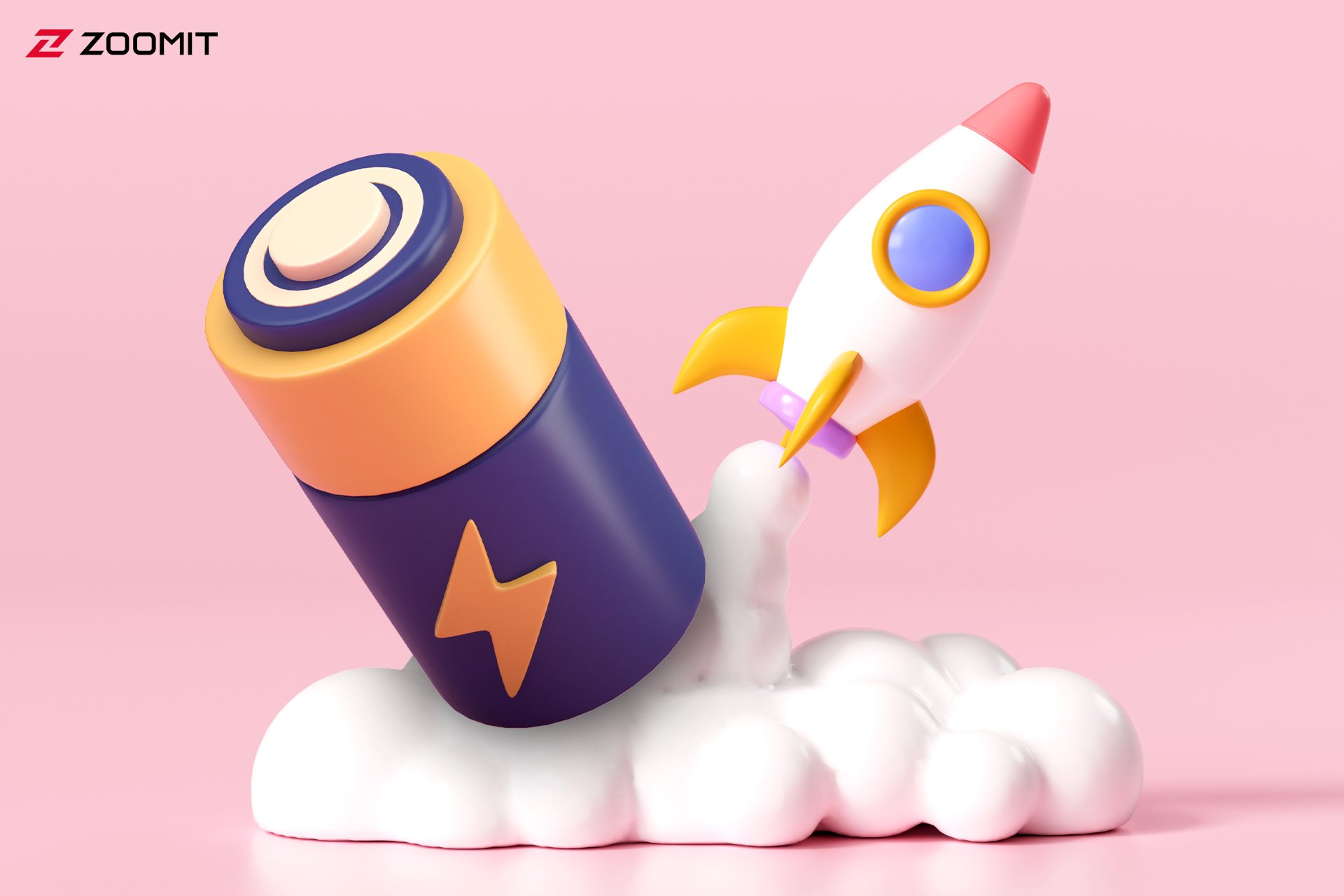What Is Fast Charge Technology And What Are Its Standards?
Fast Charging Is One Of The Features Very Important In Phones And Laptops Today. Join Us In This Article To Get Acquainted With This Technology, Its Performance, And How To Use It.
Today, one of the most widely used terms in the world of technology is fast charging of phones and laptops, and every manufacturer tries to surpass its competitors in this field when unveiling its new products. Until a few decades ago, it took almost a whole night for phones to charge fully; But today, thanks to advances in technology and fast charging, this is no longer a concern. Most of the major handsets on the market today have fast charging capabilities, and people can charge their phones in less than 30 minutes.
What is the fast charge?
Fast charging is a term often used to market chargers and devices capable of delivering faster than the current standard charge. The fast charging device is a type of battery charging technology that reduces the time required to fully charge the device by increasing the amount of power sent from the charger to the battery. A standard 2.5-watt USB port transmits electrical energy to the device, while some fast chargers can output up to 100 watts. Note that not all phones support fast charging, and if you use this feature, you will need a charger and cable following its fast-charging standards. Using the fast charge standard will not be incompatible with the middle of the phone and will not provide the desired result. Qualcomm’s fast charging is currently the dominant fast charging technology on the market, which is also used in most smartphones. Still, there are other fast charging standards, such as Power Delivery (PD for short), each of which, in addition to limitations, also has incompatibilities with some devices.
The advent of fast charging technology
Today, almost all flagship phones on the market are equipped with various technologies with fast charging capability. The manufacturers of these products often use phrases such as 80% charge in 30 minutes or full charge in less than an hour when introducing them. On the other hand, with the advancement of technology and lifestyle changes, people’s use of phones and laptops has also increased, so that many people have to charge their devices more than once a day. On the other hand, the dimensions of mobile phones are getting bigger every year and they need bigger batteries to compensate for more electricity consumption; Naturally, this prolongs the full charge time of the devices. Time is of the essence in today’s life, and almost everyone is looking to charge their devices in minutes instead of hours. Fast charging technology was actually the answer to addressing these concerns and saving time.
Battery charging and discharging process
All gadgets equipped with batteries have the same method of energy transfer; The batteries of these gadgets are charged by passing current and there is no limit on the amount of current and input voltage. In the meantime, there is a control circuit (IC) that is equipped with voltage and heat sensors and by adjusting the amount of voltage and input current to the battery, protects the battery against sudden surges of current and prolongs its life. Battery cells are made up of two electrodes (positive and negative) and an electrolyte, and the ions from the chemical reactions inside the electrolyte provide the required electrical current.
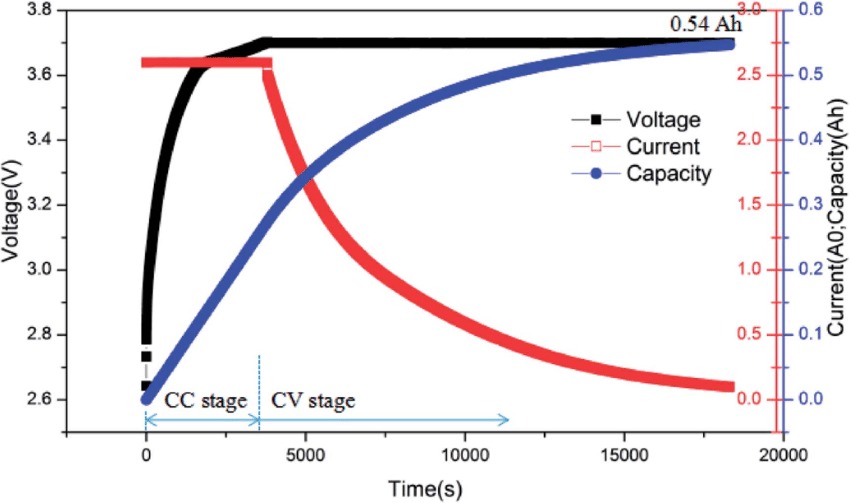
In non-rechargeable ion batteries, the chemical reactions of the electrodes occur only once; But in rechargeable lithium-ion batteries (used in today’s phones) these reactions are reversible: when the battery is discharged, chemical reactions generate electricity, and when the battery is charged, they absorb energy.
How fast charge technology works
The main components of the charge are ampere , voltage and watts . Ampere (or current) is the amount of electrical current that enters the device from the battery, and voltage is the force that drives this current forward. Watt (or output power) is obtained by multiplying amperes by voltage, and the higher the voltage and amperes, the higher the watts. For example, a 3-amp, 5-volt charger produces 15 watts of electricity, and a 12-volt charger with 3 amps of electrical current produces 36 watts of power; The higher the wattage, the faster the charge. For a better understanding, consider an irrigation hose. If the amperage (or current) is the width of the hose and the voltage is the water pressure, watts is the amount of water leaving the hose.
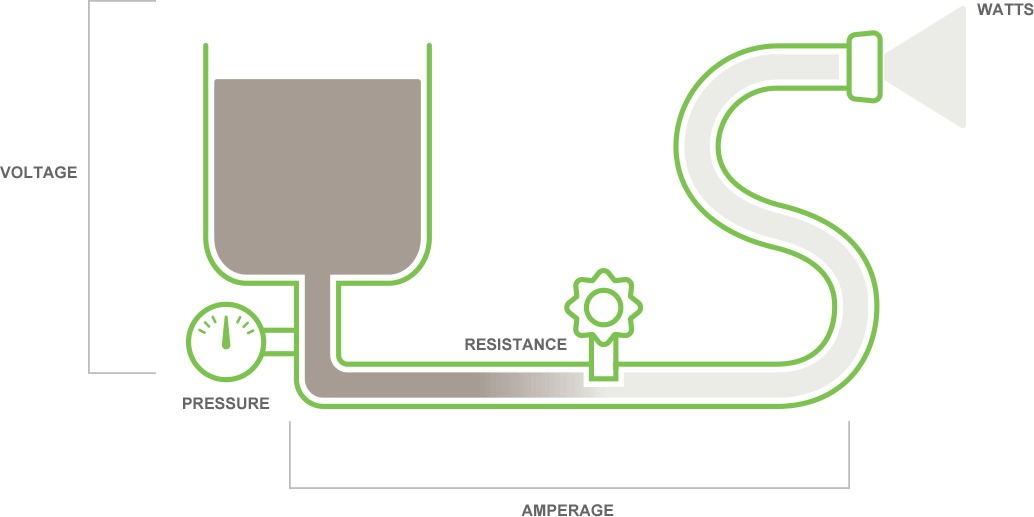
The ability to charge 50 to 80% of the battery in half an hour is a slogan that manufacturers rely on the method of receiving battery power inside the phones. These batteries are made of rechargeable lithium ion, and if you take a closer look at the process of charging the phone battery, you will notice that its charging speed gradually slows down over time.
The whole charging process can be divided into three stages:
- Constant current / incremental voltage: As the current remains constant in conventional chargers, the voltage increases; At this stage, a lot of energy is quickly transferred to the device. Chargers with fast charging technology also increase power at this stage.
- Constant voltage / decreasing current: the voltage reaches its peak and the current decreases; In fact, when the battery receives more than half its charge, the charger lowers the voltage to prevent overheating or overcharging; At this stage, the charging speed decreases.
- After the battery is fully charged, the charging process of the phone is stopped or dripped so that the percentage of full charge remains constant while the phone is charging.
Fast charge In the most basic method, it simply charges the phone in a shorter time by increasing the power (Watt). A standard USB port supplies 2.5 watts of power to the device, and fast chargers increase this amount. Today’s devices generally come with a 15-watt charger; But some manufacturers also offer 50 watt, 80 watt or even 100 watt chargers. It is quite clear that how the technology used in fast charging is implemented and how it works does not matter to the end user; But using a high watt charger is not easy for manufacturers. Note that the power that developers claim for their fast charging standards is actually the maximum power provided by these standards, and this value (watts) is not transmitted throughout the fast charging process.
In-Charge Controller Circuit Protects the Battery from High Voltage and Amperage
As mentioned, high voltage generates heat and this heat damages the battery; But the voltage is low in the first stage of charging, and fast chargers are designed to take advantage of this opportunity and pump the current to the battery as much as possible before reaching the maximum voltage.
This means that the most effective and efficient part of fast charging technology manifests itself in the first stage of the charging cycle. Therefore, when the battery is less than 50% charged, fast charging offers its best performance. Phone makers also mention the time it takes for the battery to reach 40%, 50% or 60% to promote the charging speed of their devices, and if you compare the time required to fully charge a device to 100% with this period, you will see. The time required to charge from 50% to 100% is much longer than the time required to charge from zero% to 50%.
Supplies needed for fast charging
You will need the following to use fast charging standards:
Charger: For fast charging, you need a charger that supports the fast charging standard; A charger with low voltage or current output slowly charges the phone. To know the charger output, just read the text on the adapter. For example, if the adapter has a voltage of 5 volts and an amperage of 3 amps, the total output will be 15 watts. (W = VxA).
Cable: The type of cable and USB connector used can also affect the charging speed. USB 1.0 and USB 2.0 can transmit up to 2.5 watts of electrical power, which is equivalent to a normal slow-charging rate. USB 3.0 can provide 4.5 watts of power, while USB-C, standard 3.1, can transmit up to 100 watts of electricity.
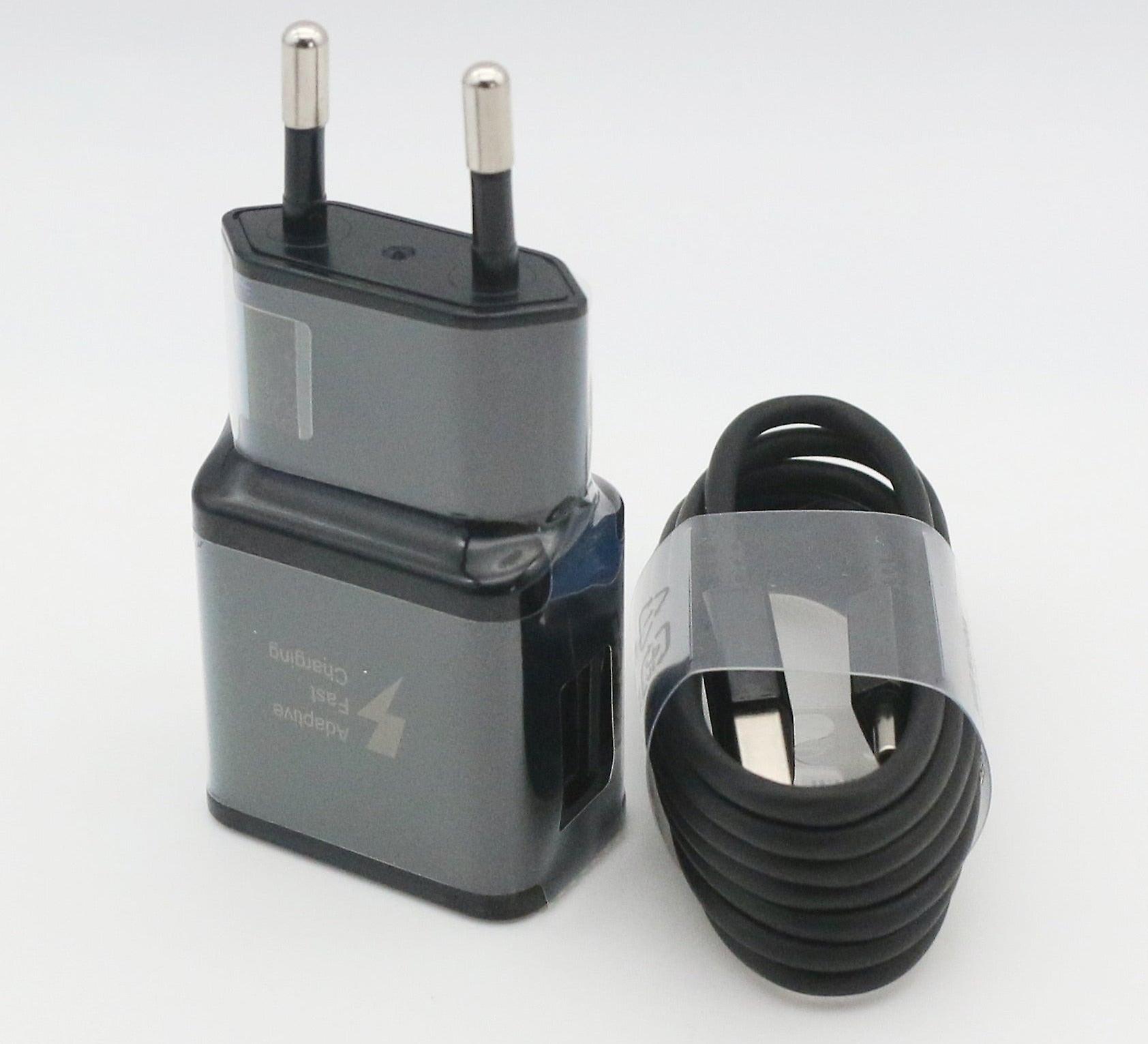
Fast charging phone: If your phone does not have fast charging technology, it can not support this standard. Even if you have a fast charger with the right cable, you can not charge a phone that does not support fast charging faster than usual. To know the maximum charging speed that each phone can support, just check the battery specifications and charge from within the phone’s own settings.
Charge devices with USB cables
Today, almost all rechargeable devices are equipped with a USB port for charging, before the introduction of this port, chargers were made mostly of the needle or socket type; But now USB cables have become the standard for charging, which is easily found everywhere, as well as the USB Power Delivery feature, which is used for fast charging.
USB ports are divided into 4 standards 1.0, 2.0, 3.0 and 3.1, the first and the second can transfer power up to 5V / 0.5A or 2.5 watts, and ordinary phones are charged at the same rate. USB 3.0 ports have an output of about 4.5 watts (5V / 0.9A) and then we go to the USB-C port or USB 3.1, which can potentially transmit much higher voltage.
Many devices equipped with a USB 3.1 port can use the standard USB Power Delivery or USB-PD for fast charging, which has a final output power of 20V / 5A or 100 watts. Of course, phones do not usually need this power and can be used to quickly charge laptops equipped with a USB-C port.
Fast charge standards
Different manufacturers develop different standards for the charging process that can change the output and charging time. Power and length of each fast charge process Each of these standards also varies depending on the device, charger, output power of each device:
USB Power Delivery یا USB-PD
USB Power Delivery or USB-PD is one of the fast charging standards that provides up to 100 watts of output and can be used by all manufacturers of devices equipped with USB-C port. The direction of energy flow is not fixed in this standard. For example, some power banks can be charged both through the USB-C port and can charge other devices through the same port. Of course, different manufacturers use the USB-PD standard in different ways. For example, compare how Apple and Google use the USB-PD standard below:
USB-PD standard on Apple rechargeable products
The USB-PD standard in Apple products, due to the software limitations of the iOS ecosystem, is only active in the range of zero to 79% and is deactivated when it reaches 80%: iPhones using the USB-PD fast charging standard can charge zero to 50% of the battery Charge within 30 minutes. To use this standard for Apple rechargeable products, you will need a Lightning cable with USB-PD support, which you must purchase separately.
| Apple fast charge standard | Voltage | current | The most power |
|---|---|---|---|
| iPhone | 9 volts | 2.2 amps | 20Watts |
| iPad | 9 volts | 2 amps | 18Watts |
| Macbook Pro | 20.5 volts | 4.7 amps | 96Watts |
| Macbook Air | 20 volts | 3.25 amps | 67Watts |
In 2017, Apple announced that the iPhone 8 and above will be available with fast charging support; The company currently produces 18, 20, 29, 30, 67, 87 and 96 watt adapters that can be charged quickly with a USB-C cable, the best power for fast charging iPhones, 20 watts and more powerful adapters for the iPad or MacBook family. Are used.
IPhones that support the USB-PD fast charging standard include the iPhone 8, 8 Plus, iPhone X, iPhone XS, iPhone XS Max, iPhone XR, iPhone 11 family, iPhone 12 family, and iPhone 13 family.
Unlike some Android phones, iPhones do not display the phrase fast charge on the phone screen. If the iPhone is connected to a fast charging cable, you will feel more vibration or hear the charging notification sound twice. Another way to check the iPhone’s fast charge is to consider the charging time: If the iPhone’s charge reaches a percentage within 30 minutes, it means that the iPhone’s charging process is faster than usual. Of course, there are devices for this purpose that can show the wattage of the phone.
USB-PD standard in Google rechargeable products
The USB-PD standard is also compatible with a wide range of Google products; But it is slower than Apple’s products. Unlike Apple, Google sells chargers and cables specifically for this standard along with pixel phones.
| Google Quick Charge Standard | Voltage | current | The most power |
|---|---|---|---|
| USB-PD | 9 volts | 2 amps | 18Watts |
If you also want to buy third-party cables, you can use USB-C to USB 2.0 or USB-A adapters and cables; But keep in mind that the charging speed of Google products with USB-C to USB-A conversion cable, regardless of the adapter used, will be slower than USB-C to USB 2.0 conversion cable. Fast charging of Pixel phones, like Apple phones, is active in the range of zero to 79%, after which the charging process is deactivated. This standard with 18 watt or higher adapters charges pixel phones in 15 minutes.
Qualcomm fast charge standard
The Qualcomm QC was the first fast charging standard to be widely used in Android phones such as the Galaxy series. USB Power Delivery, on the other hand, is a relatively new standard adopted by Google and Apple. Quick Charge 5 is Qualcomm’s latest standard for fast charging, introduced in July 2020, and can increase the phone’s battery charge to 50% in 5 minutes and 100% in 15 minutes. Currently, support for this standard is limited to the Galaxy S20 family of phones and beyond.
| Qualcomm standard fast charge | Voltage | current | The most power |
|---|---|---|---|
| Quick Charge 1.0 | 5 volts | 2 amps | 10Watts |
| Quick Charge 2.0 | 5 volts, 9 volts, 12 volts | 1.67 amps, 2 amps | 18Watts |
| Quick Charge 3.0 | 3.6 to 20 volts | 2.5 amps, 4.6 amps | 18Watts |
| +Quick Charge 4.0 | 5V and 9V (USB-PD) 3.6V to 20V |
3 amps (USB-PD) 2.5 amps, 4.6 amps |
27W (USB-PD) |
| Quick Charge 5.0 | 5V and 9V (USB-PD) 3.3V to 20V |
3 amps, 5 amps and more | More than 100 watts |
Quick Charge 4 +, the standard of the previous generation of this technology, has a maximum output power of 100 watts, supports older versions of Quick Charge and is also compatible with the USB-PD standard. Quick Charge 3.0 and lower versions only support Quick Charge compatible accessories and are not USB-PD compatible.
Qualcomm claims that the Quick Charge 4 + standard can charge 50% of a battery in 15 minutes. This time is about 15 minutes longer for Quick Charge 3.0. Qualcomm Quick Charge Smart Balance uses the coolest route available for transmission, and the device’s sensors control body and interface temperatures to prevent overheating and short circuits.
Xiaomi Fast Charge Standard
Xiaomi’s standard fast charge standard is called HyperCharge, and the maximum power it offers is 200 watts. Xiaomi first unveiled this technology in the Mi 11T Pro and then introduced it for the 5G version of the Redmi Note 11 Pro Plus. Before introducing HyperCharge technology, Xiaomi used different versions of Qualcomm Quick Charge for a long time.
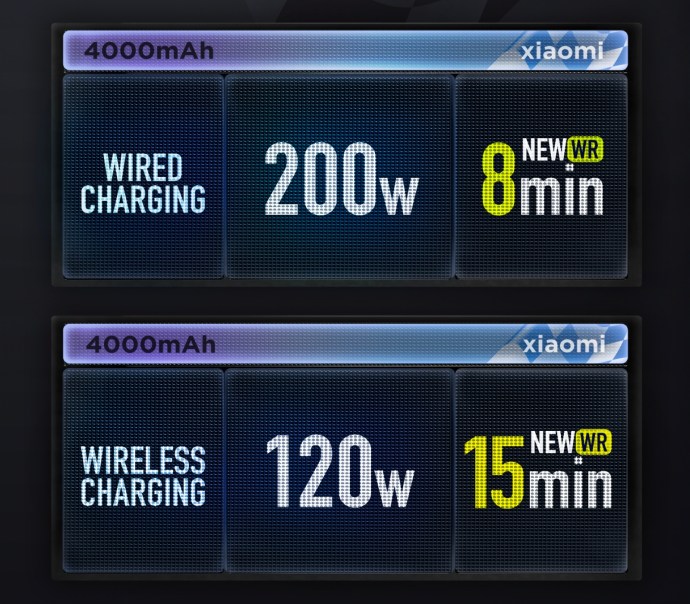
The Hypercharge standard can fully charge a 4,000 mAh battery in 8 minutes with 200 watt fast wired charge and 15 minutes with 120 watt wireless fast charge. It can be said that by introducing this standard, Xiaomi created a huge revolution in the field of fast charging.
Samsung fast charge standard
Samsung also has its own fast charging standard and introduced the first version of this standard called adaptive fast charging for the first time with the 5G version of the Galaxy S10. The phone uses a 4500 mAh battery and supports the standard 25-watt USB-PD charging. Samsung has named the next two versions of its fast charging standard Super Fast Charging 1.0 and 2.0.
Galaxy Note 10 Plus, S20 and Note 20 series phones are charged at higher speeds using Super Fast Charging 2.0. Despite the maximum output power claimed for each of Samsung’s fast charge standards, these standards are a little more conservative in practice. Most Samsung devices also support accessories that are compatible with Quick Charge technology.
| Samsung fast charge standard | Voltage | current | The most power |
|---|---|---|---|
| Adaptive Fast Charging | 5 volts, 9 volts | 2 amps | 18Watts |
| Super Fast Charging 1.0 | 11 volts | 2. 25 amps | 25Watts |
| Super Fast Charging 2.0 | 10 volts | 4.5 amps | 45Watts |
Samsung has not officially announced the full charge time using Adaptive Fast Charging technology; But studies show that the Galaxy S8 with this standard and with a 3000 mAh battery, it takes about 2 hours to fully charge, and the Galaxy Note 10 Plus with the Super Fast Charging standard takes about an hour.
Samsung offers adaptive fast charging up to 9 volts and 2 amps (18 watts); While the latest version of the Korean company’s fast charge with 10 volts and 4.5 amps, the output is 45 watts. As mentioned, both standards are a bit more conservative in practice, and achieving the highest speed of each requires the purchase of an approved charger; But most Samsung devices support compatible accessories with fast charging or programmable power supply (PPS).
Motorola fast charge standard
Motorola uses a special fast charging standard in its handsets called TurboPower, which is slower than some fast charging standards. The Motorola TurboPower standard is actually an optimized version of Quick Charge 3.0 for Motorola phones like the 2021 Moto G Power.
| Motorola fast charge standard | Voltage | current | The most power |
|---|---|---|---|
| TurboPower 15 | 9 volts, 12 volts | 1.2 amps, 1.67 amps | 15Watts |
| TurboPower 25 | 5 volts, 9 volts, 12 volts | 2.15 amps, 2.85 amps | 25Watts |
| TurboPower 30 | 5 volts | 5.7 amps | 5mouth |
TurboPower adapters are available in three models: 15-watt, 25-watt and 30-watt, with the fastest offering 5 volts and a maximum of 5.7 amps for approximately 28.5 watts. The TurboPower standard is not limited to Motorola chargers; the company has announced that it is working with manufacturers to design custom batteries, as well as its power management software to monitor battery status and then adjust the input voltage accordingly. .
You do not need a TurboPower adapter to quickly charge phones equipped with TurboPower, and this standard is compatible with any Quick Charge 3.0 (or newer) adapter. According to Motorola, the TurboPower 30 standard can charge a battery for 15 hours on a 15-minute charge, and the TurboPower thermal management hardware is designed to prevent heat from slowing down and maintain a consistent, fast charge rate; This standard is also compatible with Quick Charge 2.0 and higher adapters.
OnePlus and Oppo fast charge standard
OnePlus has purchased the Warp Charge standard (originally called Dash Charge) from the company, which is based on the Oppo VOOC fast charge standard. This standard is only compatible with Oppo and OnePlus handsets, adapters and chargers, is not compatible with regular USB cables, and requires thicker cables to supply higher voltages.
Most common fast charging standards increase the charging speed by increasing the voltage of their adapters; But Oppo and OnePlus have different functions and increase current instead of voltage. This is also the reason for the need for dedicated cables for fast charging of these two brands.
| OnePlus and Oppo fast charge standard | Voltage | current | The most power |
|---|---|---|---|
| Dash Charge | 5 volts | 4 amps | 20Watts |
| Warp Charge | 5 volts | 6 amps | 30Watts |
| Oppo VOOC | 5 volts | 5 amps | 25Watts |
| Oppo Super VOOC 1.0 | 10 volts | 5 amps | 50Watts |
| Oppo Super VOOC 2.0 | 10 volts | 6.5 amps | 65Watts |
The Warp Charge standard uses a microcontroller to control the charge level and synchronize with the phone’s circuits to regulate voltage and current to regulate voltage and current and minimize power fluctuations. Oppo claims that phones equipped with this standard can be charged up to 75% in 30 minutes.
Warp Charge is designed to dissipate heat very quickly; This standard converts the high voltage of the adapter power supply to a lower voltage. As a result, most of the heat never reaches the phone and the constant current reduces the heat shrinkage potential.
Dedicated Oppo dedicated fast charging standard
Oppo is one of the leading companies in fast charging technology and currently has the record for the fastest charging speed with its 65 watt adapter. The company is the only major smartphone maker to use gallium nitride (GaN) batteries in its handsets, offering them fast charging technology called Super VOOC in several different versions. The fastest is SuperVooc 2.0, which uses 10 volts and 6.5 amps for a fast 65-watt charge.
Oppo and OnePlus increase current for fast charging instead of voltage
Oppo is constantly striving for the development of its fast charging technology and in 2022 succeeded in increasing its standard Super VOOC fast charging power to 80 watts; This standard was presented in two phones, OnePlus 10 Pro and Oppo Find X5 Pro. Oppo also introduced the 125 watt Super VOOC fast charge in 2020, however this power has not yet been used in any device.
In addition, Oppo recently unveiled its latest Super VOOC fast charging standard with 150 watts (20 volts and 7.5 amps) at the Mobile World Congress, which Oppo claims can increase the charge of a 4500 mAh battery to 50% in just 5 minutes. Charge it completely in 15 minutes.
Huawei fast charge standard
The Huawei SuperCharge fast charge standard is USB-PD compatible; But it is slower than some standards. This Huawei-specific standard is embedded in phones such as the P40 Pro, P30 Pro, Mate 20 Pro and P10, and like most standards, uses above-average voltages to achieve faster charging.
| Huawei fast charge standard | Voltage | current | The most power |
|---|---|---|---|
| Huawei SuperCharge | 4.5 to 10 volts | 4 amps, 4.5 amps, 5 amps | 44 watts and more |
SuperCharge automatically adjusts the input voltage and current based on the phone’s battery status and internal temperature. This standard uses the chipset inside the charger to adjust the voltage, so the phone does not get hot. Older versions of the SuperCharge standard support the following three charging modes:
- 5 volts and 2 amps
- 4.5 volts and 5 amps
- 5 volts and 4.5 amps (up to 22.5 watts)
The latest version of the standard SuperCharge uses 11 volts and 6 amps (66 watts) for fast charging, which can increase the battery charge of 4300 mAh to 60% in 17 minutes and fully charge it in 38 minutes. According to Huawei, the SuperCharge standard can offer up to 135 watts of fast charge in the future.
Huawei manufacturers have designed the standard SuperCharge to control high currents accurately. Part of this design is the use of an eight-part cooling system and cover that can keep devices 5 degrees cooler than other conventional charging methods.
Wireless fast charging
Wireless charging is a modern way of charging smartphones that uses a process called electromagnetic induction. Inside the wireless charger is a copper transmitter coil and inside the phone is a coil for receiving waves. When you place the phone on a wireless charger, power is transferred from the charger to the phone. The handsets need a fast rechargeable battery and a way to transfer data from the device to the charger to use this feature. The challenge of wireless fast charging is how to effectively transfer large amounts of power through the air.
Qi standard
Qi ( pronounced chi ) is the most common standard for mobile wireless charging. Just like USB-PD, this standard has several versions, and by implementing reverse wireless charging, it also allows slow charging of wireless gadgets via mobile.
Qi technology has evolved over the years and its output power has reached 10, 15, 30 and finally 65 watts. Of course, the maximum power that this standard offers for charging phones is 15 watts, and in some devices it is 7.5 and 10 watts. Therefore, Qi still offers a slower charging process than wired and direct charging.
In the Qi Wireless Charging Standard, the concepts of Basic Power Index (BPP) and Broad Power Index (EPP) are the two main features of this technology that demonstrate its safety and reliability characteristics. The most obvious difference between the two is the maximum output power they provide. As the name implies, BPP offers a minimum power level of up to 5 watts and EPP offers a maximum output power of 15 watts for fast charging.

The main advantage of EPP in fast wireless charging technology is its high output power, which shortens the charging time. For this reason, EPP wireless chargers are often referred to as chargers with fast charge support.
MagSafe standard
In 2020, Apple introduced its proprietary wireless charging technology called MagSafe, which had a power output of 15 watts and was faster than the standard 20-watt wired USB-PD charging for the iPhone 12.
Oppo, OnePlus, Huawei
Meanwhile, Chinese manufacturers such as Oppo, OnePlus and Huawei have performed better in developing proprietary wireless fast charging standards. For example, Oppo introduced the standard Super VOOC with a power of 65 watts, the OnePlus WarpCharge with a minimum power of 50 watts and the Huawei SuperCharge with a maximum power of 50 watts for fast wireless charging. Of course, some manufacturers have advertised wireless charging power of 100 watts and beyond, but there is no news about the use of such speeds in commercial products.
In wireless charging technology, the more coils there are to transmit current through the air, the faster. Of course, the increase in windings, in addition to the high cost of execution, creates a lot of heat and takes up more space. Although in practice it is quite possible to speed up wireless charging technology, but the most effective way to quickly charge phones or other gadgets is not known.
Phones for charging with wireless charging technology must be able to receive 7 watts of power, and the type of charger does not matter in this process.
This output power is predetermined by the phone manufacturer:
- Apple: 7.5 watts
- Sony: 11 watts
- Algebra: 10 watts
- Google: 12 watts (for Pixel 5 and newer phones)
- Samsung: 9 watts (Wireless chargers are required to provide more than 5 watts of power in Samsung phones to have a certificate called proprietary Power Delivery Extension or PPDE; otherwise, Samsung phones will only charge with basic BPP power.
Just like what was said about wired fast charging, even if your phone and charger both support fast wireless charging technology, you may still not get the high speed when charging wirelessly by choosing the wrong accessories. This means that the cable and adapter must also have enough power to receive a fast charge. For example, if you have a 10-watt charging pad and plug it into a 5-watt adapter, your phone will only charge at 5 watts and you will not enjoy the benefits of fast charging.
For fast wireless charging, the charging pad transmits more power to the phone while charging than a regular wireless charger. And for wireless charging, just like wired fast charging, you need an adapter and fast charging cable; This technology is very effective when the battery is almost empty from fast wire charging, and when the battery is full, the charging speed is reduced so that it is not damaged.
Does fast charging damage the phone battery?
Under normal circumstances, fast charging does not cause major damage to the phone’s battery, as the battery is not slowed down by the charging speed.
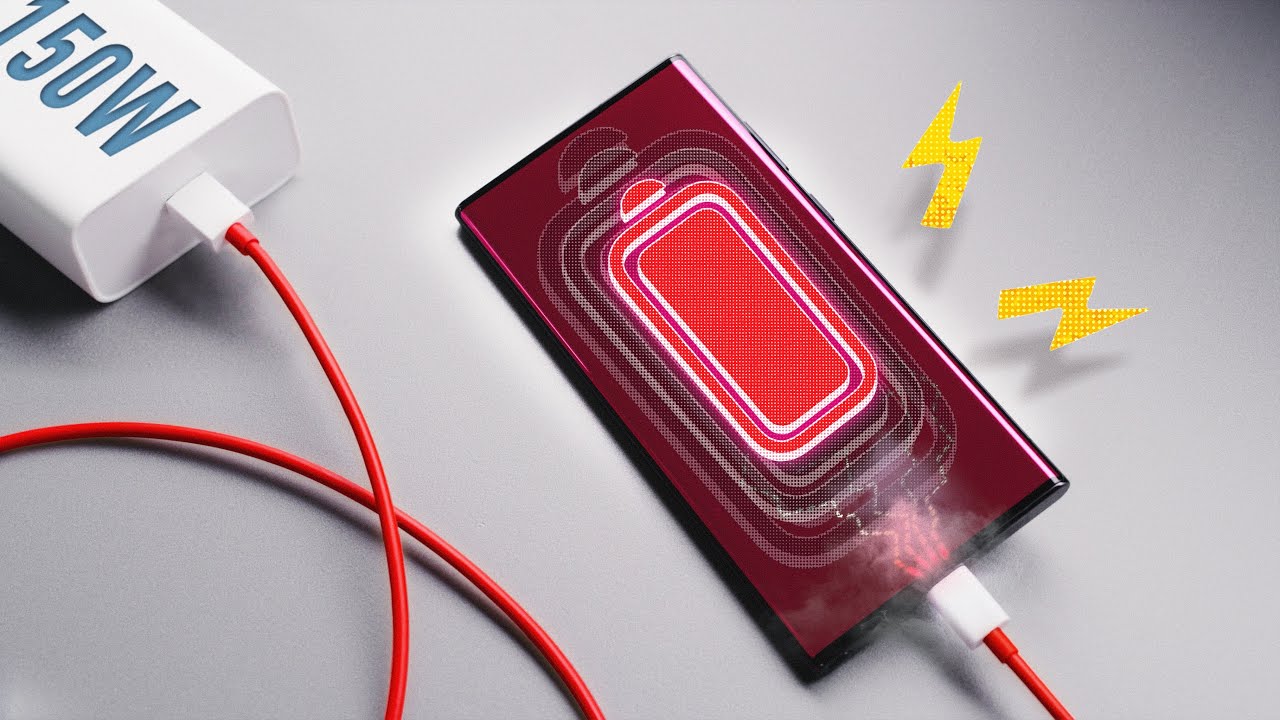
In fact, what damages the battery is the heat generated during charging. When the battery is charging, positively charged lithium ions are transferred from one electrode (called the cathode) to another electrode (anode) through the electrolyte solution in the battery cell, thus concentrating the electrons in the anode, which is on the negative side of the battery. When the battery is not in its ideal state and we charge it, the input power can no longer move the electrodes at the same initial rate and some of this power is converted to heat, this heat can damage the battery.
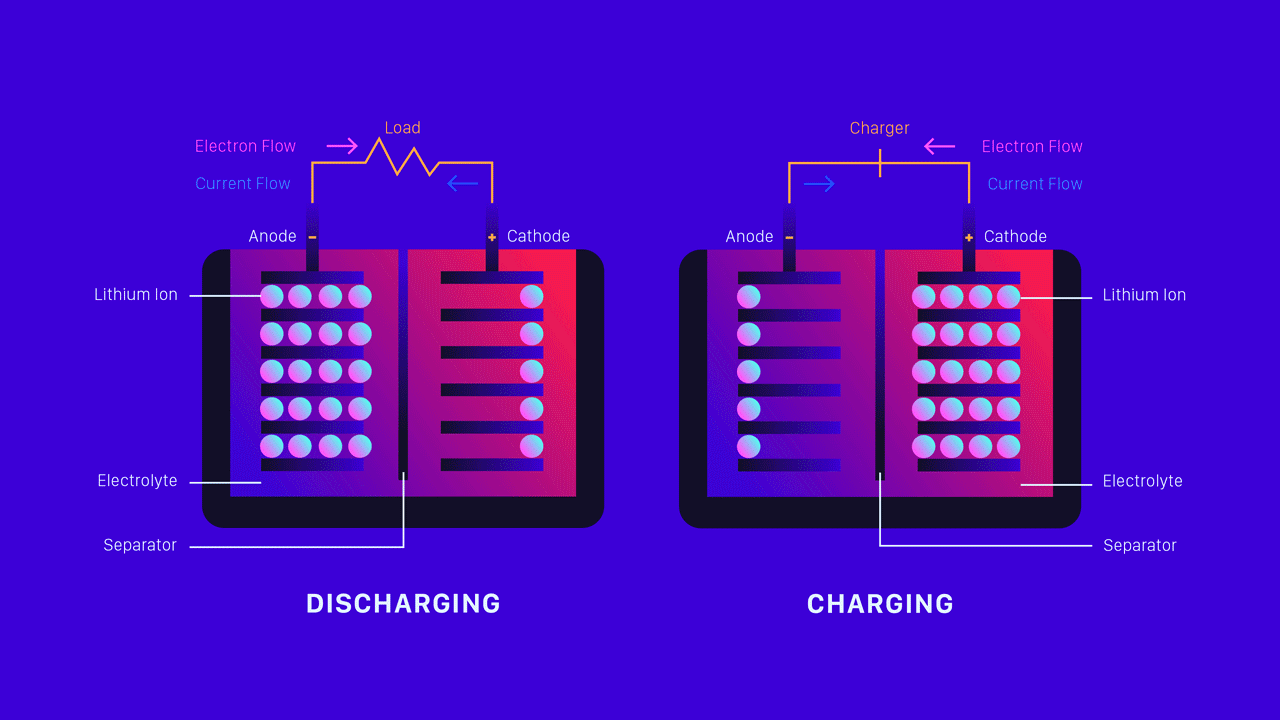
Today, fast chargers use three solutions to reduce the heat generated in the phone:
- They generate heat inside the adapter and prevent heat transfer into the phone and overheating of the battery. The disadvantage of this solution is the large size of the fast charging adapters.
- Transfer the fast charging process to the phone via Parallel Charging. In this method, the battery is divided into two cells of equal size and the input power is divided equally between the two. That is, instead of inputting 50 watts into a 5000 mAh battery, two 25 watts are transferred to a 2500 mAh battery. The disadvantage of this solution is that it takes up more space inside the phone.
- Adding hardware and a cooling system inside the phone is also one way to prevent the phone battery from overheating. Increasing the diameter of the handsets can be considered as a problem of this solution.
Note that smartphone batteries, whether you use them or not, automatically deteriorate over time, and charging cycles, however, shorten battery life. Therefore, any negative impact of the fast charging process on the battery of the phones on a larger scale will be negligible. According to the manufacturers of each fast charge standard, Xiaomi’s fast charge standard reduces the phone’s battery life by 20% after 800 recharges. This is 500 times for Apple’s fast charge and 1600 times for the standard OnePlus and Oppo fast charge.
The future of fast charging
Technology is advancing rapidly, and fast-charging standards are rapidly gaining ground; They are likely to gradually replace conventional chargers over the next few years. Early handsets can be charged in minutes to minutes, thanks to major growth in integrated circuits, charge controllers, adapters and cables.
On the other hand, today the need for fast charging technology is felt much more than in the past; This is because the capacity of mobile phones is increasing day by day and the transmission of large amounts of energy wirelessly can be dangerous without proper thermal management.
Wireless charging is still significantly slower than fast wired charging, and tech companies are still trying to figure out ways to manage heat. In this regard, companies such as OnePlus have offered 30-watt wireless chargers that are equipped with large fans to provide sufficient airflow.










